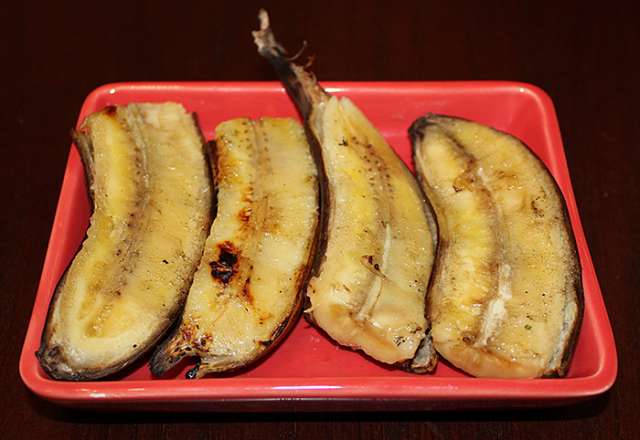While a banana`s flesh is soft and sweet, the skin is thick, fibrous, and slightly bitter. To eat the peel, you can either blend it into smoothies or fry, bake, or boil them for at least 10 minutes. Heat breaks down the skin`s fiber and loosens up that tough texture, making the peel easier to chew and digest.
Also, the riper you allow the banana to get, the thinner and sweeter the peel becomes. That`s because of a natural plant hormone called ethylene that fruits release as they ripen.
Ethylene interacts with the sugars and fiber in the banana skin, changing complex sugars into simple sugars and breaking down pectin, a form of fiber in bananas that keeps them stiff. That`s why the older your banana is, the flimsier it feels. At the same time, other hormones break down the green pigments in the peel, turning them yellow and eventually brown.
Nutritional benefits
The sweet flesh of a medium-sized banana contains significant percentages of your daily recommended intake of various nutrients, such as:
12% of your daily fiber, which helps with digestion and may help lower your risk of diabetes
17% of your vitamin C, which is important for your immune system as well as growth and development
20% of your vitamin B-6, which aids the body`s ability to convert food into energy
12% of your potassium, which helps in development of cells, tissues, and organs throughout the body
8% of your magnesium, which is important for the body`s energy productions and regulating glucose and blood pressure levels
If you then eat the skin along with the flesh you get an even bigger boost in these same nutrients:
"[The skin] contains high amounts of vitamin B6 and B12, as well as magnesium and potassium. It also contains some fiber and protein," San Diego-based nutritionist Laura Flores told LiveScience.
bananaScott Veg on Flickr
Eating the peel is not only good for your body but also better for the environment.
In 2013, bananas were America`s most popular fresh fruit. The average American ate 11.4 pounds of bananas over the course of that year.
Since a medium-sized banana weighs about 0.3 pounds, that equates to about 38 bananas per person, or roughly 12 billion for the whole US. And since most of us toss the peel, that also means a lot of organic waste. Most of this waste goes to landfills, but some of it is used as fertilizer, in water purification, and in composting.
More about:
















































